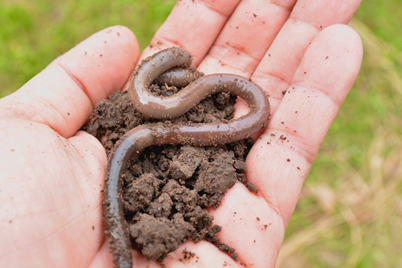Lesson Plan for Teachers & Parents
Did you know? Gardens usually have more insect inhabitants than plants, yep its true!
We have some fun ideas to get your kids (and students) outdoors to teach them about all walks of life and hone their observation skills by going on an insect safari to uncover the secret lives of bugs.
Activity: Hunt for insects in the garden and determine if they are beneficial or harmful to their plants.
Age range: 5 - 12 years
What you need:
- Notepad
- Pencil
- Clipboard to hold your paper
- Insect ID sheet
- Optional: magnifying glass and/or insect net

Background Information:
There are millions of known species of insects in the world. Some are known 'pests' that can cause damage or harm and others get a bad reputation, when really they can be beneficial for your garden.
'It's important to know that insects often play unseen but very important roles in our ecosystems. Some provide us with obvious benefits such as useful products like honey from bees and silk from silkworms.Others, like ladybugs and lacewings, offer protection from pest insects through predation and parasitism. Then there are the important pollinators of our food crops (about 35% of our food crops depend on insect pollinators such as bees). Even the not so glamorous bugs such as blow flies and dung beetles have a role in the decomposition of organic materials .
Insects that benefit our gardens, whether they help control pest insects, reduce plant diseases or pollinate flowers, are known as beneficial insects. They are very important and fascinating to study. Here is a guide to Good Bugs & Bad Bugs.
Warning: Warning: be sure to tell the kids not to touch any of the insects they find, particularly spiders. Here is a spider chart just in case.
Starting your Safari
- Ask students what they know about insects. Get them to complete some colouring in sheets of the bugs they know and want to learn more about. Talk about their features - including how many legs they have, do they have wings, where do you think you would find them in the garden.
- Tell the kids that the 'Great Insect Safari' begins today in the garden. Ensure they are wearing hats, sunscreen and gloves if they will be digging around the dirt.
- Ensure that each student is aware that their job is to observe the insect in its habitat. They can work as individuals or as a team to explore and discover.
- Encourage them to look under leaves, at the base of plants, in the soil (with gloves on), in the air and around blooming flowers. See if you can find your insect on the Insect ID checklist. If not, try drawing a picture of it. Compare large to small insects in the garden. What important job are they doing? Are there many insects together or are they alone?
- When you return to class get the students to add colour to their sketches based on what they saw. Share their designs and then talk about identifying the bugs.
- Discuss with the kids how the insects differed in real life to what they thought they would be like. Did they learn something new about any insects?


